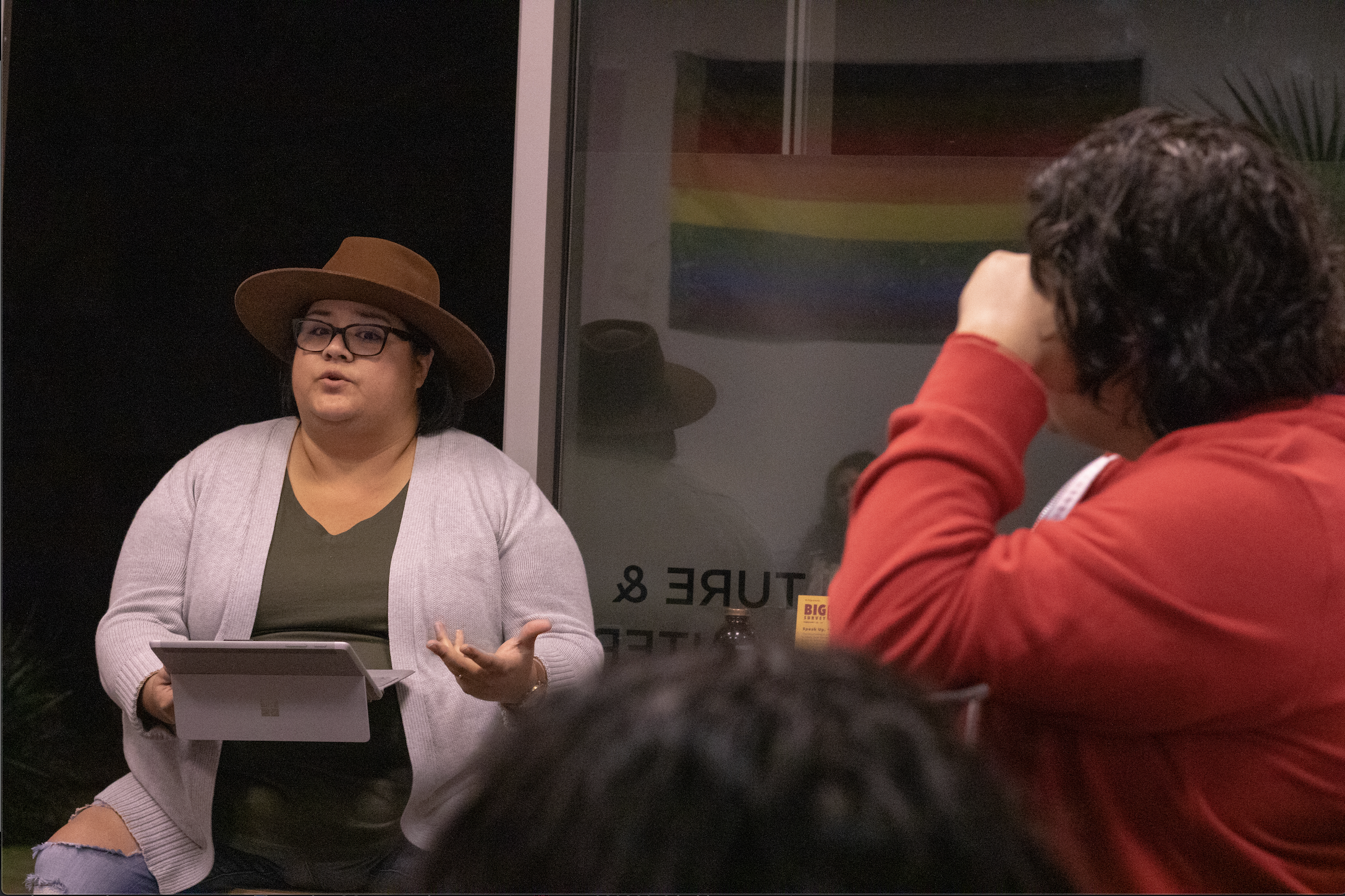Janneth Najera, member of El Comité, speaking to the committee in the borrowed space of the QCRC about the absence of their own center. Photo Cred: Nova Blanco-Rico.
By Yeymy Garcia and Destiny Torres, Staff Editors
California State University, Dominguez Hills President Thomas A. Parham says he hasn’t been on a campus in 30 years that doesn’t have a Latinx center. Despite having the second-largest percentage of Latinx students in the CSU system, CSUDH has yet to create one.
And students want to know why and how to get one on campus.
So last week, students created a committee, El Comité, to get those questions answered.
Neighboring CSU campuses including Cal State Los Angeles, Cal State Long Beach, and Cal State Fullerton have smaller percentages of Latinx students but have spaces dedicated to Latinx concerns.
In the past three years, CSUDH has opened the Rose Black Resource Center, the Queer Culture and Resource Center, and the Toro Dreamer Success Center. Latinx students see how much value those spaces provide for students, and believe a Latinx center on campus would do the same.
“This center would help Latinx students create a community and they’d also have that opportunity to check in on each other and network,” Amairani Suarez, a Chicano/a studies major said. “It would give students the chance to help each other navigate through higher education.”
Suarez and other students formed El Comité to spur the creation of a physical space to improve the campus culture for Latinx students. It currently has 40 members (and counting) comprised of Chicano/a studies and other majors. The group is a forum for students to voice their concerns on Latinx representation on campus.

El Comité holds their meetings in borrowed spaces (pictured here in the Queer Culture and Resource Center) because they don’t have place to call their own. Photo Cred: Nova Blanco-Rico
“It feels like you’re screaming into a void and no one is listening,” michelle roldan morales, an El Comité member and sociology, and Chicano/a studies major said.
This conversation is not new. At a meeting last Tuesday, a portion of the committee gathered for the first time to discuss past efforts to get a physical space on campus.
According to El Comité representative Janneth Najera, a Chicano/a studies major, the creation of a Latinx center has been discussed since Dr. William J. Hagan was CSUDH president (2014-2018). However, Najera said those plans were put on hold when Hagan resigned.
“When [current president Thomas A.] Parham came on board, things got convoluted and the center was put on the backburner,” Najera said.
Najera said the topic that has been discussed among students for at least five years, based on the members of the committee who have been attending CSUDH the longest.
“I’m going to push it back further and say that it has always been a conversation and it’s constantly ongoing but it’s something we feel but we don’t think we can voice it…thinking and analyzing our spaces critically on what is it that we need as a Latinx community,” morales said.
At a Feb. 5 CSUDH Academic Senate meeting (which is where President Parham made his comment at the top of this story) Vice President of Student Affairs William Franklin said the reason why the campus has not established a Latinx center is it was unable to hire a chief of diversity officer. But Najera says that does not excuse ignoring the needs of Latinx students.
“It makes sense but there’s been nothing keeping the administration from hiring a Latinx program coordinator that at least has the ability to program events, tabling and to have conversations with students about what is needed,” she said. “We do need a [Chief of Diversity Officer] and the person they hire needs to have [experience working] with the Latinx community.”
El Comité is creating a proposal they plan to present to Dr. Franklin Feb. 25. The proposal will outline what the students want a center to include, such as what kinds of services they hope it will provide. They are also focusing on getting more students on board.
“Institutions of higher learning are not created for people of color,” Najera said. “As POC, we need to change that.”
For scheduled meeting times and more information, email El Comité at csudhlatinxcomite@gmail.com.

